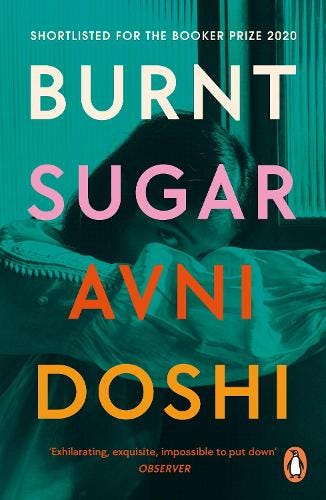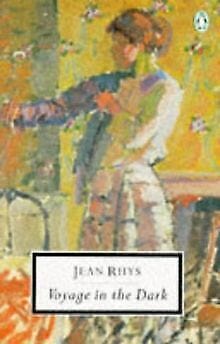Jean Rhys and the Mother-Daughter Complex
How the mother-daughter relationship still proliferates literature
Welcome to A Narrative of their Own, where I discuss the work of 20th century women writers and their relevance to contemporary culture.
Over the past few weeks, I have been sharing some of my earliest posts for the benefit of the many new subscribers (welcome!) who have joined our reading community here on A Narrative of their Own. This is the last of my refreshed re-posts, as next week I shall be starting a new season of literary discussions and cultural discourse in earnest! I hope you enjoy this post, which was the very first full-length newsletter I sent out :)
After recently picking up Avni Doshi’s Burnt Sugar, an uncomfortable read about a young married woman’s complex relationship with her mother who abandoned her and is now suffering with dementia, I found myself reflecting on how literature often relates to difficult mother-daughter relationships.
The mother complex is often defined as reflecting the experience and image of the mother or mother figure, and though can relate to both mothers and sons as well as mothers and daughters, it is often the complexities of the mother daughter relationship which feature in artistic works. Often informed by the first experience of our closest relationship with a primary caregiver, this can follow with relationships with other significant women, as well as the cultural construct of the mother within society as a whole.
A proponent of the modernist literary movement, Jean Rhys (1890-1979), was no stranger to the complexities of the mother-daughter relationship.
Born under the name Ella Gwendoline Rees Williams in Dominica the daughter of Minna Williams (nee Lockhart), a third generation Dominican Creole, and William Rees Williams, a Welsh doctor, Rhys was sent to England at the age of 16 and from then on lived a transient existence. Her relationship with her mother, Minna, was a troubled one, with Rhys often referring to her mother’s distance and ambivalence towards her. In Rhys’s unfinished autobiography Smile Please, she makes reference to her mother as indifferent towards her, and goes on to entertain fantasies of forgotten intimacies with her mother, thinking perhaps she had forgotten a time before her mother considered her a nuisance. She later claimed that she gradually thought of her mother less until she became like a stranger to her.
Sadly, an overriding memory Rhys held onto through the many notebooks she kept was of a time when her mother had attempted to discipline her, claiming that her mother had eventually given in, telling the young Rhys that she would never learn to be like other people. This one comment, Rhys claims, led directly to the long road of isolation and loneliness that would permeate the female characters of her novels.
Although Rhys insisted that she began to forget about her mother, she undoubtedly encodes her into her texts. Most of her five novels feature mothers or mother figures of some description, whether dead, dying, absent or step. Her writing also often centres around abortions and infant death, locating Rhys’s position that the women within her narratives can neither find maternal love or provide it.
Within her novel Voyage in the Dark (1934), Rhys’s central character Anna Morgan has fled her tropical home in Dominica following the death of her mother and her only known relative in London is her English step-mother, Hester, whom she dislikes. In comparison, Anna feels a closer relationship in her constant reveries of her colourful and exotic life in Dominica with her housemaid, Francine. In contrast to the white, reserved English Hester Morgan, the black servant girl Francine operates as a surrogate to the inquisitive child Anna. Anna openly identifies with Francine, even recalling the time she confessed that she hated being white, and feared that Francine disliked her for this reason. Francine appears to operate as a maternal figure within the novel, taking it upon herself to explain menstruation to the young Anna, validating her entry into womanhood in place of Anna’s own mother.
Later, in England, the young Anna experiences the horror of a botched abortion which almost kills her, drawing some critics to conclude that this was Rhys’s attempt to convey the death of her own child in infancy. Rhys famously utilised her own life experiences as a conduit through which to create her fictional female characters. Often described as bitter and self-pitying, Rhys also had great self-awareness and used her profound isolation to intimately inform her work, stating: ‘I have only ever written about myself…people have always been shadows to me’.
Interestingly, within Rhys’s original manuscript, Anna dies of a haemorrhage following the abortion. Her (male) publisher however forced her to re-write the ending, feeling that it was too dark; in the revised version, a male doctor visits Anna, remarking that though he has saved her life, she will be likely to let it happen again. Within this act of control over Rhys’s manuscript, her agency to write her own ending echoes that of her female protagonists who also lacked agency within their lives, relying on men to direct their trajectory.
Rhys did however go on to become a mother herself. Her marriage to her first husband, Jean Lenglet in 1919, resulted in a son who died at just a few weeks old, and a daughter, Maryvonne, born in 1922. When Rhys and Lenglet separated, she left her daughter with him. In a common thread with female novelists of the period, the abandonment of her own child accompanied her most prolific writing period.
Encouraged to write by modernist writer Ford Madox Ford with whom she had a brief relationship, Rhys published four novels: Quartet (1928), After Leaving Mr Mackenzie (1931), Voyage in the Dark (1934), and Good Morning, Midnight (1939). The novels all share similarities to Rhys’s own life, the dislocation she often felt at being half Creole, and the same sense of abandonment and isolation she experienced throughout her life. By the mid to late 1940’s, and with several failed marriages and her novels going out of print, Rhys had all but disappeared from the literary scene, living as a practical recluse in Bude, Cornwall.
In 1950, an actress named Selma Vaz Dias, having adapted Good Morning, Midnight for the radio and requiring Rhys's permission to perform it, put out an advertisement to try to find her. Rhys luckily answered the call and subsequently caught the attention of literary agent Francis Wyndham who became interested in publishing a novel she had been working on, Wide Sargasso Sea, a reworking of Charlotte Bronte’s Jane Eyre and told from the point of view of the mad woman in the attic, Bertha Mason. Rhys had begun what was to become her most acclaimed novel 20 years earlier, in 1939, but it was not to be published until 1966 when Rhys was 76 years old. Through Rhys’s recreation of the Creole born Bertha, as her own mother had been, it seemed that Rhys finally got to return to the scene of her isolation and abandonment by her mother as a young girl. The book took an emotional toll on Rhys, forcing her to confront the place she had once called home.
Rhys went on to publish two collections of short stories following the success of Wide Sargasso Sea, Tigers are better looking and The Left Bank and Other Stories in 1968, however despite the critical acclaim she at last received, she disregarded her later work as ‘magazine stories’. It seemed that the abandoned and neglected girl that had begun her life in the Caribbean never quite got over the feelings of rejection she had suffered as a child.
Though Avni Doshi’s contemporary mother-daughter relationship in Burnt Sugar continues into adulthood, there is something equally ‘lost’ about the central character, Antara. When her mother Tara develops dementia, she takes her into her home, raising the overriding question of the book: how do you love and care for a mother who abused and abandoned you as a child? Antara’s vitriol is often shockingly explicit, admitting that she takes pleasure from her mother’s misery.
Antara reveals through flashbacks that her mother as a young woman became obsessed with a guru in a local ashram in Pune, India, where the story is set. Becoming one of his devotees, Antara reveals that her mother regularly abandoned her, unfed, and at times becoming physically abusive towards her. But as Tara becomes engulfed in dementia, the roles are reversed, and a different kind of relationship opens up. For Tara, this means forgetting the past, but Antara cannot forgive, neither can she gain any restitution from the mother who no longer remembers their shared history.
Other novels have dealt with the difficulties of caring for a parent with dementia. But what is interesting in Doshi’s novel is the complexity of the mother-daughter relationship at the heart of the story. When the abusive mother becomes childlike in her vulnerability, how should the abused daughter react? By an act of abandonment in return?
Though Antara’s abuse differed to Rhys’s and her protagonists, both writers underline the issues around difficult mother-daughter relationships and abandonment. As Antara becomes a mother herself, she begins to realise the frustrations and demands of motherhood; as similarly the real-life Rhys found herself physically abandoning her own daughter to return to England and write her novels, possibly considering herself ill-equipped to fulfil such a role. As her former editor Diana Athill points out, Rhys remained childlike throughout her life.
As both Rhys and Doshi’s work raise questions around what it is to be a mother, and whether our first exposure to such a relationship affects the way we see ourselves as mothers, daughters, and women in the world, it seems that the complexities of the mother-daughter relationship continue to find a home in contemporary literature.
That’s it for the last of the summer posts. I’ve really enjoyed looking back over the body of work that I’ve built up here on the newsletter and updating and re-sharing some of my favourites. For more literary discussions like this, you can check back on my archives at any time. I’ll be back on Tuesday with my end of August Review, (as well as a special one year anniversary post!) and again next Sunday. Hope to see you there :)
If you have just found this newsletter and love discussions on all things literature, as well as connections to both contemporary culture and the art of writing, please consider a free or paid subscription. Paid subscriptions help me to continue to write and research quality newsletters every week - and the yearly fee works out at just £2 per month! Thank you for reading 😀






Well worth a second read! :)
A really interesting read thank you for sharing and allowing us to read it